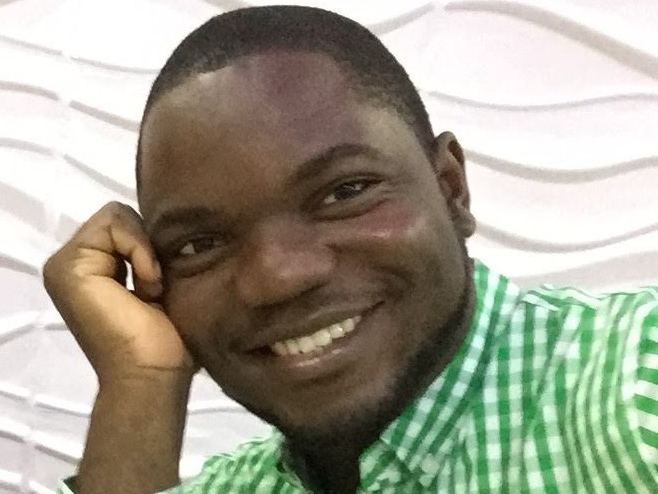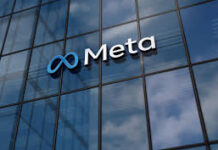We Developed CET Drone to Detect Kidnappers, Terrorists’ Hide-Outs- Nigerian Robotic Engineer
A Nigerian Robotic Engineer, Dr. Olusola Ayoola has developed a Carbon Emission Tracker (CET) Drone for aerial surveillance in detecting hideouts of criminals within caves and forest areas.
in an exclusive interview with the TechDigest.ng, Dr. Ayoola who is the founder of Robotic and Artificial Intelligence Nigeria (RAIN), an indigenous Artificial Intelligence firm based in Ibadan, Oyo State revealed that criminal elements hiding in caves and forested areas cannot escape the innovative capability of drone surveillance offered by the Carbon Emission Tracker Drone (CETD).
Excerpts:
TechDigest: Can you give us your brief profile?
Dr. Ayoola: I studied in Nigeria at the University of Ibadan, gained a first-class in Electrical and Electronic Engineering. I was granted a scholarship by the Nigerian Government to the UK where I achieved a distinction in my Master’s degree. I also gained another scholarship by the UK government to bag a doctorate degree in Robotics for Extreme Environments at the University of Manchester. I returned to Nigeria after working with a Robotics firm to address some of UK’s Nuclear Decommissioning challenges. My mission was to set up the first-of-a-kind robotics and artificial intelligence facility in Nigeria that provides structured learning, certifications, research, and product development for various sectors. And we are doing just that. The facility has grown very well with private funding. A lot more can be achieved if supported. But with what we have put on the ground, we are fast-breaking barriers.
TechDigest: Give us details about the Carbon Emission Tracker Drone you have invented?
Dr. Ayoola: The carbon emission tracker drone is a trailblazer in the sense that it beats several challenges faced in the concept of drone surveillance. First of all, we must agree that there is a great challenge of security in our part of the world. This insecurity has been narrowed down to the difficulty in detecting or accessing hideouts of criminal elements. With the use of drone-based aerial surveillance, one could attempt to obtain video feeds from the skies which help track the movement or activities of criminals in game reserves. How about when these footpaths lead into a cave, or a forested canopy, or an underground tunnel? What can a military-grade drone-based camera see? There goes the challenge of geospatial intelligence gathering. Also, note the challenge of military-grade cameras. They take ages to import. They weigh a lot on the drone and subsequently tell on the flight time. After being challenged by the Minister of Youths and Sports who visited RAIN in 2020, researchers began to look into how to beat these limitations. We discovered the Carbon Emission Detection Based Aerial Surveillance which allows a drone to sniff out hideouts through the carbon their activities emit. As long as human life exists in a forested location, there must be carbon emission, be it under a cave, under a canopy or inside a bunker.

TechDigest: Have you or your firm participated in Innovation Challenges?
Dr. Ayoola: We are a very focused research organization solving real problems. We do not seek to compete just for the sake of showcasing capabilities, gaining medals, and financial prizes. However, we will not discourage our trainees from doing so. Yes, some have participated and won severally in their individual capacity. We have methods we adopt to validating our solutions prior to patenting. So we have to be very careful in this regard.
TechDigest: What are the unique/major features of your invention – Carbon Emission Detection Tracker Drone? How long can it stay in the air? What’s the battery lifespan?
Dr Ayoola: Unfortunately, I will not be able to divulge technical details of the capability of the solution we have developed. As you will agree, security is a major challenge here and all the advantage we can render to the architecture we will, including the confidentiality of Technical Intelligence (Techint). Once we begin to disclose, this becomes a weakness. However, the assurance I can give is that whatever solution we provide will be complementary to the existing capacity of any end-user.
TechDigest: How will the Carbon Emission Tracker Drone benefit Nigerians, especially the security agencies?
Dr. Ayoola: The benefit is huge. Take for example the issue of kidnappings. There has to be a solution in sight. This novel solution comes with a barrage of many other possibilities and insights into how we can bring back security to our dear nation and other countries in Africa. We cannot overemphasize the role of geospatial intelligence. I have always maintained that wherever government cannot be physically present, the government’s intelligence must always be. We have huge game reserves all scattered across the nation. Even Sambisa forest used to be one. With this new technology, we can quickly scan the entirety of our game reserves to generate a real map of which spots of these hitherto assumed uninhabited forests have suddenly spiked up in human activities. If this is an indication of a criminal enclave rapidly developing across the country, then it helps us nip the growth in the bud before it becomes another combative force.
TechDigest: Has your Carbon Emission Tracker Drone been assessed by any Nigeria by regulatory agencies, particularly NITDA?
Dr. Ayoola: There hasn’t been any contact from NITDA regarding this solution. However, the awareness of this solution has been passed across to all relevant national agencies. Some have made enquiries and are studying this technology already.
TechDigest: Have you made efforts to reach out to any security agency for testing and deployment or are you having any difficulty?
Dr. Ayoola: I do not think there is any difficulty in that regard. To the best of my knowledge, the current crop of leaders at the helm of affairs of our national security agencies have put all cards on the table and are open to all possible solutions.
TechDigest: Please explain the kind of support you need from the federal government?
Dr. Ayoola: I will need the federal government to weigh in on the capability of RAIN, I mean Robotics and Artificial Intelligence Nigeria. We need to expand physically, financially and technically. We do not have all the resources which our counterparts in the USA and China have. If the government decide to fund RAIN I do not see how Nigeria won’t overtake many countries. Sometimes all you need is willing followership, for good leaders to thrive. At RAIN we have the best crop of youths who have dedicated themselves and their talents to finding solutions to national problems.
TechDigest: Can you mention some of your inventions?
Dr. Ayoola: We have invented solutions for the management of the energy sector. We have developed a modular traffic light system, that meaning that for the first time in our country, we can have traffic lights for road users that are manageable and can work. We have invented artificial vision for the blind. We have also developed for personal security, a wireless perimeter fencing for private homes and for soldiers at the war front to save them from ambush. These are to mention a few of what RAIN brings to the table. The least we expect from government is direct funding through grants, not loans. It is possible. We can get there if we reach the right office.
TechDigest: Some people are saying that partnerships with indigenous technology firms would be beneficial. What do you think about that suggestion?
Dr. Ayoola: Partnerships are always great. But collaboration is greater. There is a thin line between the two and we must be fully aware of the distinction. Away from the semantics, for RAIN, considering the many sectors we provide solutions for, we are better poised to interface with other indigenous firms that have a focus on each of these areas. This we can achieve through collaboration.
Source: Techdigest.ng
















